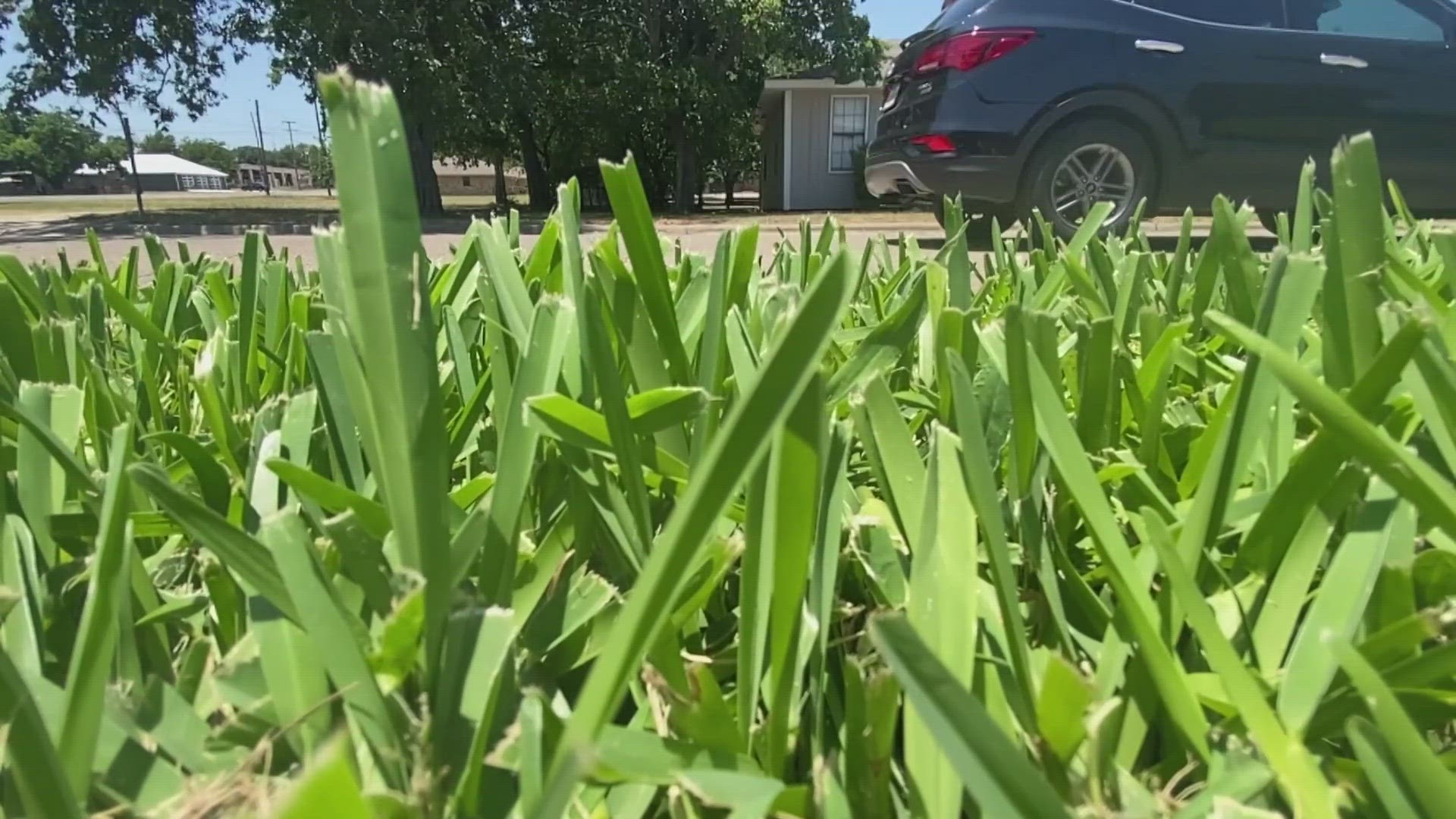GRANBURY, Texas — When temperatures hit the high 90s, grass can start to shut down and turn brown regardless of care. And during 100-degree summer days, lawns could quickly die, but there are several tips that can help any homeowner thrive during the summer.
Brent Batchelor has been growing and researching grass for more than 30 years and is a regional program leader for Texas A&M’s Agrilife Extension.
He said a critical first step is just knowing the type of grass you have.
“It’s kind of a personal preference just like cars and everything else,” he said. “You can find a texture and a color that fits your palate.”
Most Texas lawns have Bermuda, St. Augustine or Zoysia. All can survive with typical twice-a-week water restrictions in most cities. Bermuda performs best in full sun but dies in shade, but by contrast, St. Augustine can thrive in shade.
“It’ll be enough to keep it alive. It may not thrive under those conditions. It depends on how much you can get out there,” Batchelor said. “Clay-based soil has a great ability to store water so if we can store that water for the rest of the week watering it will be sufficient.”
Timing is key to watering. By midday, most water just evaporates, and watering in the evening could allow water to grow disease if it’s not absorbed quickly enough.
Batchelor recommends watering between 3 a.m. and daylight for the best results.
"Then we get some sunshine that dries it off, but yet we get full use of the water that we’re putting on it,” he said.
The free website and app "Water My Yard" is a partnership between the A&M Ag Extension and North Texas Municipal Water District. Putting in an address provides localized advice on when to water a lawn and if it’s needed at all based on recent rainfall.
Batchelor has several cheap tips for monitoring lawns and watering.
One is to just walk through the yard. If footprints are still visible after three seconds instead of the lawn springing back up, then it’s likely in need of water.
The other tip he calls the "tuna can method." Put tuna cans around the different zones in the irrigation system and run the system for 30 minutes. Then, check the cans to see the output.
“If you don’t know how much you’re putting out, it’s hard to figure out how long you need to run your system,” he said.
Another method of water is called "cycle and soak," which Batchelor compares to spoon-feeding a lawn. It puts on a little water at a time and allows it to soak in but, it can require a higher-tech irrigation system.
Allowing grass to grow longer, and up to four inches for St. Augustine, can help roots grow deeper and allow the grass to absorb more water.
Summer lawn care can start in the winter, too. It's not free, but A&M and other local companies can do soil tests to make sure soil is prepared to grow grass in the spring and summer.
Researchers are currently creating drought-resistant grasses for a future in which water could be even more scarce and populations continue to grow. With 100-degree heat, though, everyone needs to conserve for now.
“We have a water deficit,” Batchelor said. “Across the state we have more people moving here every day and we need to have water for the essential uses that we have.”

